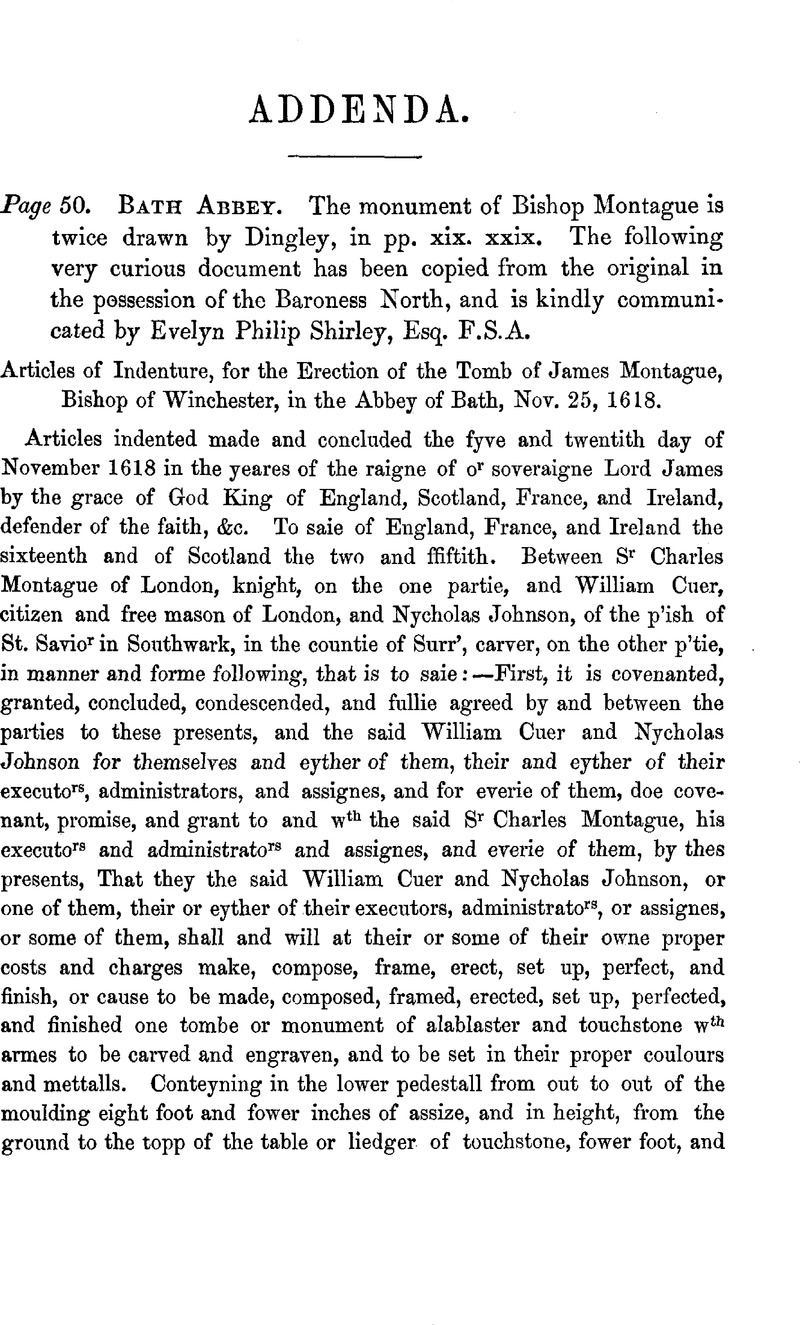No CrossRef data available.
Article contents
Addenda
Published online by Cambridge University Press: 24 December 2009
Abstract

- Type
- History from Marble
- Information
- Copyright
- Copyright © Royal Historical Society 1868
References
page 167 note 1 These two and the last in p. cccxviii. are represented of a smaller size, as if they were not pennies but half-pennies. But the engraving described in the text shows that this difference originated with Dingley.
page 167 note 2 Ælfredi Magni Anglorum Regis invictissimi Vita. Fol. Oxon. 1678, tab. iii. They were derived from a copy of the former engraving in the library of Corpus Christi College, and which is still there preserved, in the third volume of Brian Twyne's collections, together with a copy of a Roman inscription taken up at Manchester. Catalogus Manuscriptorum Oxoniensium Pars Altera (fol. 1697) p. 56.
page 168 note 1 “The Silver Coins of England arranged and described, with remarks on British Money previous to the Saxon Dynasties. By Edward Hawkins, F.R.S. F.A.S. & c. Keeper of Antiquities in British Museum. 1841.” Royal 8vo.
page 171 note 1 Le Neve's Fasti, (edit. Hardy), i. 503.
page 171 note 2 Le Neve, ut supra. By deed, dated February 1686, Alice widow of Thomas Trafford, D.D. late Rector of Pembridge, gave a rent-charge issuing from a house in Kington, to support six poor people in Dr. Trafford's almshouse in Pembridge. The trustees include three members of the Sherborne family, with whom she was probably connected. (Inf. Rev. C. J. Robinson.)
page 172 note 1 This should be Sir Henry Rowe, Lord Mayor 1607, not Edward.
page 172 note 2 Banks, in his Extinct and Dormant Peerage, iii. 734, names for his second countess, Eleanor, daughter of Sir Richard Wortley. She was his third countess, and afterwards Countess of Manchester. See an article respecting these ladies in The Herald and Genealogist, vol. v.


